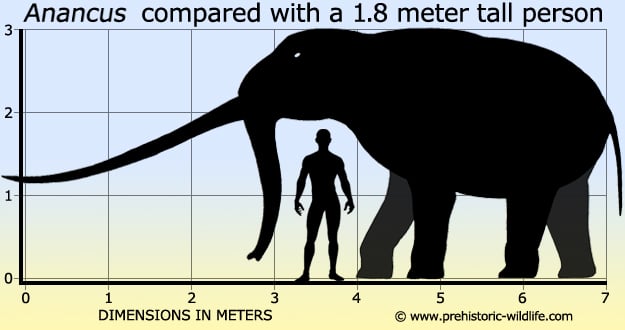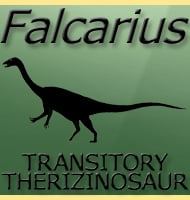In Depth
Although not the largest of prehistoric elephants, Anancus stands out from the crowd with its greatly elongated tusks which could reach lengths of up to four meters, almost as long as the body. These tusks which were like in all elephants modified teeth, are thought to have been used to root up plants that were in front of it. Once loosened up, Anancus could then take a few steps forward and pick the plants up with its trunk. This kind of foraging behaviour would have allowed Anancus to specialise in feeding upon plants that were beyond the capability of herbivores.
Although first appearing in the Miocene period, Anancus already has a more modern elephant body form, particularly with its shorter neck. The legs of Anancus however were still proportionately shorter than they were in modern forms. Anancus seems to have been a common sight in Africa during the Miocene and Pliocene with European and Asian deposits appearing during the Pliocene and continuing into the first stage of Pleistocene. Anancus does not seem to have survived beyond this point in the Pleistocene however, probably because of the on-going series of glaciations changing the environment, as well as competition from mammoths that were better adapted to live in this environment.
Further Reading
– Interrelationships of late Neogene elephantoids: new evidence from the Middle Awash Valley, Afar, Ethiopia. – J. E. Kalb & D.J. Froelich – 1995. – New material of Anancus kenyensis (Proboscidea, Mammalia) from Toros-Menalla (Late Miocene, Chad): Contribution to the systematics of African anancines. – Journal of African Earth Sciences 53:171-176. – Lionel Hautier, Hassane Taisso Mackaye, Fabrice Lihoreau & Pascal Tassy – 2009.










